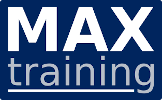Linux Essentials
Code: LEDescription
This course provides technical staff new to UNIX and Linux with a sound appreciation of the operating system. Delegates will leave this class with a fundamental knowledge of the UNIX and Linux operating systems and be able to use some of the more advanced facilities. Having gained suitable, complementary experience they can progress to further specialised training to establish peak effectiveness.
Audience
This course is designed for technical staff (support personnel, application developers, system integrators) and users requiring the basic skills necessary to interface effectively with UNIX and Linux based Open Systems.
This course is suitable for all major vendor releases of UNIX and Linux, including AIX (up to 7.x), HP-UX, Sun Solaris, SCO UNIXWare, Red Hat, SUSE, Debian, etc...
Prerequisites
Delegates should be technical staff who have some knowledge of the Windows operating system at any level.
No prior experience with UNIX or Linux is required.
Objectives
On completion of this course delegates will be able to:
- Describe the various interfaces to UNIX and Linux
- Benefit from the GUI desktop environments
- Work with the command line and use basic UNIX & Linux commands
- Navigate the filesystem and manipulate files and directories
- Maintain file security
- Manage processes
- Benefit from the functionality of the Korn and BASH shell
- Edit text with vi and vim
- Access the web and utilise mail services
- Create Simple Shell Scripts
Topics
Welcome to the world of UNIX and Linux
Why do Users choose UNIX and Linux?
An Operating System
The UNIX and Linux Operating Systems
Components of the Operating System
Organisation of a UNIX and Linux System
The Kernel
The Filesystem
The Shell
User Interfaces
Terminal-based Interface
The Command Processor.
Utilities
Window-based Interfaces (CDE, KDE and Gnome)
Using Gnome
Distributed Environments
Networking
Logging On and Getting Help
Logging On
Accessing the Command Line
Format of UNIX and Linux Commands
Getting help
Web based help
Super User Privileges and Setting and Changing the Password
Navigating the Filesystem
Structure of a UNIX and Linux Filesystem
Identifying Files and Directories
Address Formats
The Home Directory
Where am I? (pwd)
Moving Around the Filesystem (cd)
Listing Directory Contents
Creating Directories
Removing Directories
Displaying Files
Displaying File Contents
Copying Files and Directories
Moving and Renaming Files & Directories
Removing Files
Shell Facilities
The Shell Environment
Using Wildcards (Metacharacters)
Default Action of the Shell
Saving Output and Using File Input (Redirection)
Bolting Commands Together (piping)
Gluing Files Together (cat)
Aliases
Package Management
Source vs Binary
Distributions
Redhat Package Manager (RPM)
YUM
Debian Packages (dpkg)
APT
Package Management GUIs
Editing
Introducing the vi and vim Editors
Key Tricks
vi and vim Modes
The vi and vim Editor for Beginners
Some Further Useful features
Process Handling
What is a Process?
Interactive or Background?
Process Fork / exec
Process, Report Status
Process, kill a
Allocating Priority
Logging out using Nohup
Sequential Command
Networking
Network basics
ifconfig
ip command
boot time network configuration
Physical Storage
Disk Structure
Partitions
RAID
LVM
File Systems
Elements of a file System
Types of File System
Journalling
Creating a file System
Expanding a file system
UNIX and Linux Utilities
The Find Utility
Sort or merge Files
sed, grep, regular expressions and wildcards
UNIX and Linux Security
File System Permissions
Change mode
Symbolic Notation
Octal Notation
Change owner
Change group
Default Creation Mode
Backup and Restore
Tar, Zip and Unzip Utilities
Cpio Utility
Pathname considerations
The Shell Environment
Shell Environment
System Variables
Shell Variables
Assigning Variables
Displaying Variable Values
Exporting variables
Shell Interpretation
Using Quotes in the Shell
The Back Quote (Command Quote)
The Single Quote
The Double Quotes
The Backslash
Special Escape Characters
Recalling and Modifying Previous Commands
Shell Programming
Shell Scripts
Executing Shell Scripts
Passing Arguments To A Program
Positional Parameters
Special Shell Parameters
The Read Command
Price (ex. VAT)
Duration
Delivery methods
- Classroom
- On-site (at your location)
- Virtual (instructor online)
